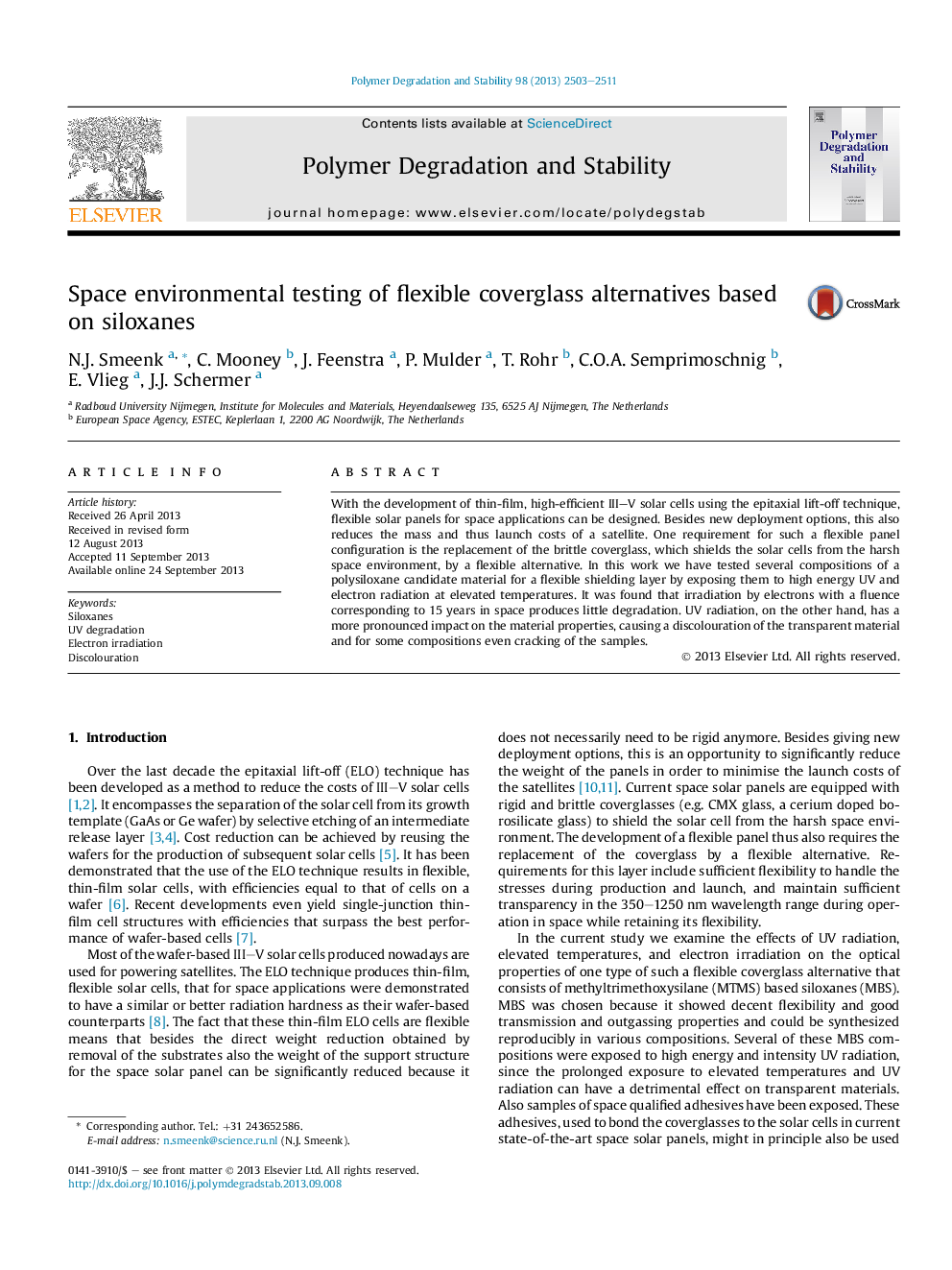| Article ID | Journal | Published Year | Pages | File Type |
|---|---|---|---|---|
| 5202161 | Polymer Degradation and Stability | 2013 | 9 Pages |
Abstract
With the development of thin-film, high-efficient III-V solar cells using the epitaxial lift-off technique, flexible solar panels for space applications can be designed. Besides new deployment options, this also reduces the mass and thus launch costs of a satellite. One requirement for such a flexible panel configuration is the replacement of the brittle coverglass, which shields the solar cells from the harsh space environment, by a flexible alternative. In this work we have tested several compositions of a polysiloxane candidate material for a flexible shielding layer by exposing them to high energy UV and electron radiation at elevated temperatures. It was found that irradiation by electrons with a fluence corresponding to 15 years in space produces little degradation. UV radiation, on the other hand, has a more pronounced impact on the material properties, causing a discolouration of the transparent material and for some compositions even cracking of the samples.
Related Topics
Physical Sciences and Engineering
Chemistry
Organic Chemistry
Authors
N.J. Smeenk, C. Mooney, J. Feenstra, P. Mulder, T. Rohr, C.O.A. Semprimoschnig, E. Vlieg, J.J. Schermer,
